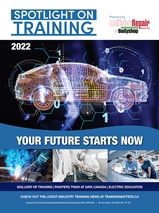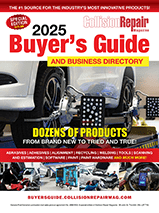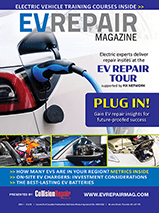- Deployed technology enables future smart cities to increase safety, decrease congestion, reduce pollution and enable autonomous driving
- Using decades of automotive systems expertise, Continental applies proven automotive technology to city infrastructure
- Continental’s Wrong-Way Driver detection system debuts in Michigan and will be showcased at CES 2020
AUBURN HILLS, Mich.–(BUSINESS WIRE)–The technology company Continental today announced a big step toward creating safer, smarter cities: a Smart City Mobility and Transportation Hub in Auburn Hills, Michigan. At the center of this Smart City Mobility and Transportation Hub are two intersections made intelligent thanks to Continental sensors and intelligent software integrated into the infrastructure. Ultimately, this technology will have the potential to improve traffic flow, add convenience, reduce pollution and, most importantly, significantly increase the intersection’s safety by communicating hidden dangers to approaching connected vehicles and pedestrians. Furthermore, Continental’s Wrong-Way Driver detection system, which warns at-risk drivers in the vicinity of a driver heading the wrong way, has also been installed.
“With about 80 percent of Americans living in urban areas, a steady increase in pedestrian fatalities, and more than 43 percent of crashes taking place at intersections, a focus on improved safety at city intersections has never been more important,” said Jeremy McClain, director of Chassis and Safety Systems and Technology for Continental, North America. “By bringing together a variety of automotive-grade technologies, systems and expertise, Continental’s Smart City technologies have the potential to greatly improve the lives of everyone who enters the area.”
In its current phase, the Smart City Mobility and Transportation Hub is collecting important non-personally identifiable information, like location and movement patterns, about pedestrians, vehicles and other intersection-related activity to create an environment model needed for infrastructure-to-everything (I2X) communication. The environment model provides information about traffic participants (i.e., vehicles and vulnerable road users), traffic infrastructure, static objects and the overall road situation to connected vehicles.
“With Continental’s sensor technology, we want to apply our years of experience in the automotive industry to make intersections more intelligent, and therefore safer and more efficient,” said Laurent Fabre, head of Passive Safety and Sensorics Business Unit at Continental.
Proven technologies for new applications
For decades Continental has engineered products and systems for vehicles that make roads safer, driving more convenient and road users more connected. Now it is applying that same expertise to equip infrastructure with the ability to sense its surroundings and ultimately communicate what it sees to road users.
The Smart City Mobility and Transportation Hub infrastructure is equipped with Continental’s state-of-the-art short- and long-range radars. These radar sensors have been deployed on a number of vehicle platforms over the years, and enable functions like adaptive cruise control, blind spot detection, forward collision warning, lane change assist and more. Continental now looks to apply the economies of scale together with its software functions knowhow from automotive to the infrastructure.
From data analysis to making a difference
In addition to the Continental radar sensors, the Auburn Hills Smart City Mobility and Transportation Hub also has a roadside unit and electronic control unit to process data and run the environment model and functions.
This combination can offer a number of benefits, like counting the number of vehicles entering and exiting a specific zone to communicate the number of available parking spaces to interested vehicles. By connecting to a traffic light controller, traffic flow can be better optimized, reducing not only congestion, but also emissions from idling vehicles. The solution makes it possible to warn an approaching vehicle about occluded hazards such as pedestrians. With additional analysis and artificial intelligence, intention prediction of pedestrians becomes possible, helping to alert drivers to pedestrians planning to cross even when the vehicle has the right of way.
“Auburn Hills is excited to partner with Continental to provide a real-world test location for Smart City Technology that will make the future of transportation safer not only for motorists, but cyclists, pedestrians, and other users within the confluence of the intersection,” said Auburn Hills Mayor Kevin McDaniel.
Wrong-Way Driver detection system implementation
An additional feature added to the Auburn Hills Smart City Mobility and Transportation Hub is Continental’s Wrong-Way Driver (WWD) detection system, which warns at-risk drivers in the vicinity of a driver heading the wrong way. Designed for deployment on freeways and highways, crashes involving a wrong-way driver are often catastrophic. In fact, in the U.S. on average there are approximately 295 crashes producing 389 fatalities each year, trending upwards over the last 5 years. Continental’s WWD detection system will be showcased at CES 2020.
Unlike other solutions on the market, Continental’s WWD detection system relies heavily on its premium automotive-grade radar sensors to detect wrong-way drivers. The detection technology uses a combination of Continental sensors, connected-vehicle systems and a heatmapping algorithm. The self-learning system automatically defines the roadways and directions of travel, then sends an alert via push notification to a mobile device or connected vehicle informing at-risk vehicles of the wrong-way driver’s location, speed and direction of travel.
This technology is packaged into a fixed-mount I2X roadside unit with low power requirements, making it suitable for solar power. The WWD detection system would be installed on existing poles and gantries near the beginning of highway exit ramps, not only detecting and alerting of wrong-way drivers just entering the highway, but also those who may have entered several miles before.
While this information and alert can be sent to authorities and at-risk drivers via I2V, V2X or SMS, it could potentially be integrated into widely used navigation apps, increasing penetration and effectiveness.
In addition to Auburn Hills, Continental operates a Smart City Mobility and Transportation Hub in Changsha, China, as well as Intelligent Intersections in Walnut Creek, California, and Columbus, Ohio, and plans to expand to other cities in the near future.
You can find the Auburn Hills intersections at the center of Continental’s Smart City Mobility and Transportation Hub below:
Auburn Hills, Michigan: Auburn Road and North Squirrel Road, and Auburn and South Squirrel Road
Auburn Hills, Michigan WWD: North Squirrel Road at Parklawn Street
Continental at CES 2020
The Continental press conference will be held at Mandalay Bay, Level 2, Surf Ballrooms D-F at 10 a.m. on Monday, January 6. Continental will also showcase its latest innovations and technologies in a private exhibit at the Renaissance Hotel. An invitation-only media event has been scheduled for Tuesday, January 7. Please reach out for additional information.
Continental develops pioneering technologies and services for sustainable and connected mobility of people and their goods. Founded in 1871, the technology company offers safe, efficient, intelligent, and affordable solutions for vehicles, machines, traffic and transportation. In 2018, Continental generated sales of €44.4 billion and currently employs more than 240,000 people in 60 countries and markets.
Social Media
For the latest Continental news and information, follow us on:
Facebook: Continental USA
Twitter: @ContiPress
Press portal: www.continental-press.com
Media center: continental.com/media-center
#SafelyThere Campaign: www.continental.com/safelythere
Contacts
Brianna Blust
Senior Communications Specialist
Continental, North America
Phone: +1 (238) 393-6492
Email: Brianna.blust@continental.com

























